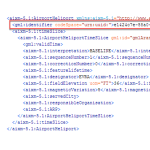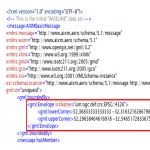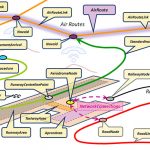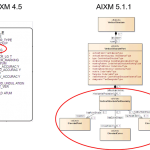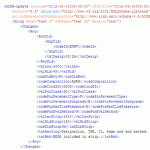To utilise a dataset, it is necessary to be able to separately identify its constituent parts. Specifically, AIXM requires this ability to express relationships between features and to identify features that are part of an AIXM message. Unique identifiers associated with each feature instance are used to achieve this. Regarding the unique identifier concepts used, AIXM 4.5 … [Read more...]
AIXM 4.5 vs. AIXM 5 – Coordinate reference systems (CRS) (Part 3b)
For all geometries of aeronautical features a coordinate reference systems (CRS) must be specified. The CRS reference is critical for the correct encoding and processing of AIXM geometries. Without a known CRS, coordinates in the descriptions of a geometry have little meaning. … [Read more...]
AIXM 4.5 vs. AIXM 5 – Geographical Elements (Part 3a)
Most aeronautical features have a geographical aspect, e.g. aerodrome reference point (ARP) is located at a certain position, a power transmission line considered as obstacle forming a line or an airspace which has a horizontal extend described by a polygon. What is the difference between AIXM 4.5 and AIXM 5 when it comes to the modelling of such geographical elements? … [Read more...]
AIXM 4.5 vs. AIXM 5 – Data Scope (Part 2)
Compared to AIXM 4.5, AIXM 5 enlarged the data scope in several areas. The main additional features that have been introduced are related to aerodrome mapping data, terminal procedure data and obstacle data. So what’s new. … [Read more...]
AIXM 4.5 vs. AIXM 5 – Overview (Part 1)
When the last major version of AIXM was released -AIXM 5.1 - everybody concerned noticed that there was a big change compared to the previous one – AIXM 4.5. But what are actually the big differences between these two versions of AIXM? … [Read more...]
